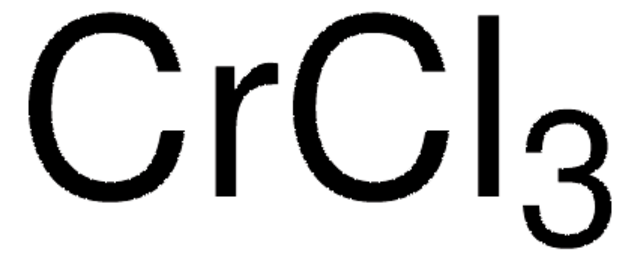323527
Selenium tetrachloride
Synonym(s):
Selenium (Ⅳ) chloride
About This Item
Recommended Products
form
powder or crystals
Quality Level
concentration
35.0-36.5% Se (after reduction with sulphite, gravimetric)
density
2.6 g/mL at 25 °C (lit.)
SMILES string
Cl[Se](Cl)(Cl)Cl
InChI
1S/Cl4Se/c1-5(2,3)4
InChI key
LNBXMNQCXXEHFT-UHFFFAOYSA-N
Signal Word
Danger
Hazard Statements
Precautionary Statements
Hazard Classifications
Acute Tox. 3 Inhalation - Acute Tox. 3 Oral - Aquatic Acute 1 - Aquatic Chronic 1 - STOT RE 2
Storage Class Code
6.1C - Combustible acute toxic Cat.3 / toxic compounds or compounds which causing chronic effects
WGK
WGK 3
Flash Point(F)
Not applicable
Flash Point(C)
Not applicable
Personal Protective Equipment
Choose from one of the most recent versions:
Already Own This Product?
Find documentation for the products that you have recently purchased in the Document Library.
Customers Also Viewed
Articles
Colloidal quantum dots (CQDs) are semiconducting crystals of only a few nanometers (ca. 2–12 nm) coated with ligand/surfactant molecules to help prevent agglomeration.
Our team of scientists has experience in all areas of research including Life Science, Material Science, Chemical Synthesis, Chromatography, Analytical and many others.
Contact Technical Service



